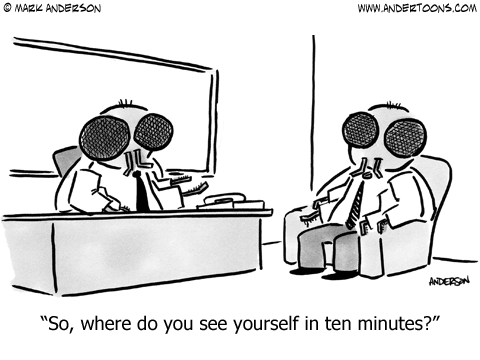Question: What’s your best piece of advice for a very young entrepreneur with little to no experience about to pitch their idea for the first time?
Pitch the Problem
“The worst thing you can do is pitch a solution for something no one cares about. Instead, home in on the problem you plan to solve, and who you are solving it for. ”
Wade Foster, Zapier
Research
“Thoroughly research the organization that you’re pitching to ensure your idea is in line with the company’s needs. Throughout this research, it’s also important to make sure you’re pitching the idea to someone who can actually do something with it.”
Andrew Schrage, Money Crashers Personal Finance
Get Ready to Be Told You’re Crazy
“The best possible response you can hope for when first pitching your idea is that people think you are crazy, that the idea won’t work and that you shouldn’t pursue it any further. That’s how all good ideas start. While there are plenty of horrible ideas that you actually SHOULD heed that advice for, the best ones tend to start that way.”
Todd Garland, BuySellAds
Believe
“If you don’t wholeheartedly believe in yourself and your idea, why would anyone else be expected to? Do your research and understand your market with confidence. Don’t let these sharks sense a taste of fear or uncertainty, otherwise they will chew you alive.”
Shahzil (Shaz) Amin, Blue Track Media
Pitch With Passion
“The absolute best piece of advice I could offer a young entrepreneur before a big pitch is to let his or her passion shine through. The excitement, drive, and motivation that drives young entrepreneurs is impossible to fake or replicate. Passion is contagious. No amount of money can buy passion. It trumps experience, and smart partners or investors will sense that excitement to succeed.”
Brittany Hodak, ZinePak
Earn Your Second Meeting With a Story
“One of the best business books I have read is “Made to Stick” by Dan and Chip Heath. They focus on the value of telling great stories — and teach readers how. Your goal in a first pitch is not to get money — it’s to earn a second meeting. The best way to gain interest is to leave your listeners with a compelling story that resonates with them long after you have left. ”
Aaron, Schwartz, Modify Watches
Go for It!
“Show your passion, detail it out as best you can — and then, listen to advice from experienced entrepreneurs. Often, eager young entrepreneurs pitch their ideas and think they’re the best things ever, so they don’t listen to any constructive criticism — and learn the hard way. That’s fine, but it’s better to listen and learn from other entrepreneurs who have already been there and done that. ”
Joe Barton, Barton Publishing
Be Receptive to Feedback
“In addition to the general nerves that accompany an idea pitch, the most frightening thought is the chance that your audience won’t like your idea. It can be tough to listen to criticism about your brainchild, but it is imperative that you filter the feedback in the most constructive way possible. If you do, the negative feedback will undoubtedly help you the most to build a stronger business.”
Charles Bogoian, Kenai Sports, LLC
Sell First, Then Pitch
“Even if you do not yet have a working product, try selling it to your target customer in person if possible. (Phone works too if you can’t in person). Sound crazy? Your potential prospect is going to give you very direct feedback on your pitch. Do they want to buy it? Why or why not? I believe the key to pitching an investor is understanding and clearly communicating your value proposition first.”
Sarah Schupp, UniversityParent
Ditch Those Slides
“TechStars taught me to start with the story. If you start with the Powerpoint, you’ll waste hours formatting slides (that you’ll likely delete later) and will box yourself into a half-baked story. Write your main value propositions on 10 notecards. Answer the standard questions about market size, revenues, and projections on another 10. Rearrange and combine the points to find your story. Voila!”
Heidi Allstop, Spill
Be Different
“Ultimately, most people won’t pay a bit of attention to the idea you are pitching. However, what they will pay very close attention to is you. The way to grab their attention and stand out from the crowd is simply to be different. Pitch in a way they’ve never seen before, even if the content is the same, and they will surely remember you.”
James Simpson, GoldFire Studios
Read Successful Blogs
“Read blogs from successful entrepreneurs who have written about raising money and pitching their ideas. I have written about raising our $2.7 million. I would not suggest reading business professors’ blogs. Instead, read about people in your business and in your space — people who go to pitches. Find someone who is recent and understands the experience and its challenges.” (Editor’s Note: Try these entrepreneur blogs.)
Jordan Fliegel, CoachUp
Relax
“Many young entrepreneurs feel very tense and second-guess themselves during pitches. You’ll be okay, even if you don’t land this investment. Relax and be confident; you will do so much better.”
Yosef Martin, Merchandize Liquidators LLC
Have the Answers
“Sit down with your team (or a friend), find any potential weak spots in your idea and figure out how to solve them. Investors always ask the “unexpected” question, so do your best to anticipate them in advance. The best feeling is walking away from your first pitch knowing that you had a good answer for everything they asked — and, as a bonus, it leaves a good impression.”
Benish Shah, Before the Label


















